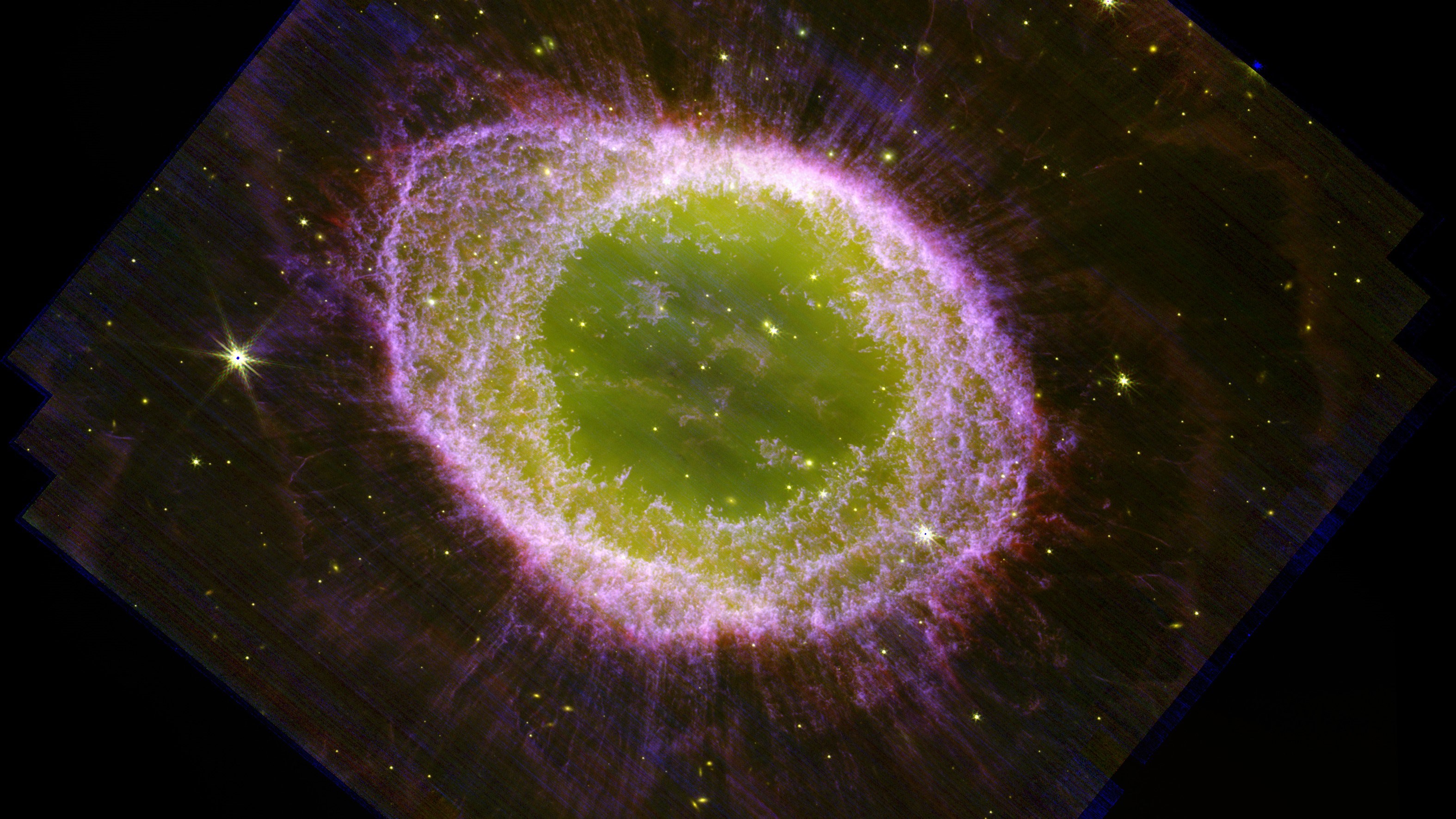 In addition to its striking aesthetic value, the images obtained by the James Webb Space Telescope (JWST) reveal the Ring Nebula, also known as Messier 57 (M57), about 2,200 light-years away, in detail that will surprise even astronomers familiar with the object. it reveals. Through James Webb’s eyes, the nebula looks like a mysterious gateway to another universe.
In addition to its striking aesthetic value, the images obtained by the James Webb Space Telescope (JWST) reveal the Ring Nebula, also known as Messier 57 (M57), about 2,200 light-years away, in detail that will surprise even astronomers familiar with the object. it reveals. Through James Webb’s eyes, the nebula looks like a mysterious gateway to another universe.New images of the iconic Ring Nebula
Located in the constellation Lyra, the Ring Nebula is actually one of the most iconic objects in the sky because it can be seen even with telescopes placed on the balcony. However, the Ring Nebula is a type of astronomical object formed from the glowing remnants of a long-dead star, a so-called “planetary nebula” and somewhat confusingly unrelated to planets. It also carries a white dwarf star in its heart.
University College London professor Mike Barlow said in a statement: “The James Webb Space Telescope has provided us with an extraordinary view of the Ring Nebula that we have never seen before. The high-resolution images not only show the intricate details of the nebula’s expanding crust, but also the inner region around the central white dwarf. It makes it clear.” used the phrases.
A glimpse into the future of the sun
 When stars of similar size to the Sun run out of fuel for nuclear fusion, they can no longer support themselves against the inward force of their own gravity, breaking the equilibrium mechanism that has kept the star stable for billions of years. As the core collapses, the outer layers of the star, where nuclear fusion still continues, expand outward, causing the star to swell as a red giant; this is the phase when the Sun will swell to the orbit of Mars in about 5 billion years, swallowing the inner planets, including Earth.
When stars of similar size to the Sun run out of fuel for nuclear fusion, they can no longer support themselves against the inward force of their own gravity, breaking the equilibrium mechanism that has kept the star stable for billions of years. As the core collapses, the outer layers of the star, where nuclear fusion still continues, expand outward, causing the star to swell as a red giant; this is the phase when the Sun will swell to the orbit of Mars in about 5 billion years, swallowing the inner planets, including Earth.Afterwards, this outer shell cools and begins to disperse in space and takes on a shape like the Ring Nebula or something different. The shape a planetary nebula will take depends on the complex physical processes that occur within it, processes that scientists still do not fully understand. This means that observations of this system give us an idea of what the Solar system might look like billions of years from now.
 Astronomers can also gather information about the chemical processes occurring in planetary nebulae by analyzing the colors emitted by the gas and dust blasted by radiation from the stars at their centers.
Astronomers can also gather information about the chemical processes occurring in planetary nebulae by analyzing the colors emitted by the gas and dust blasted by radiation from the stars at their centers.However, the matter in planetary nebulae such as M57 is thought to be enriched with heavy elements formed during the life of the dead star that formed it. Eventually, much of this matter will be incorporated into massive clouds of gas and dust called interstellar clouds. As dense regions of these clouds condense and collapse under their own gravity, the stellar will enable the birth of new stars containing material from their predecessors. This means that objects like the Ring Nebula can tell the life and death stories of stars. So while the new Ring Nebula images obtained by JWST are just a fascinating sight for us, they represent an incredible amount of information for scientists.